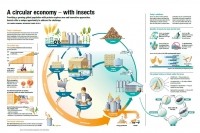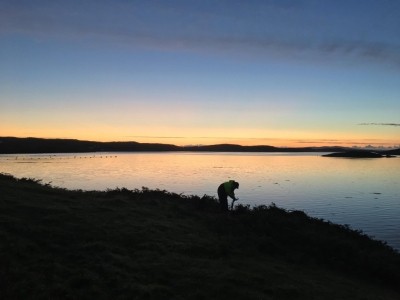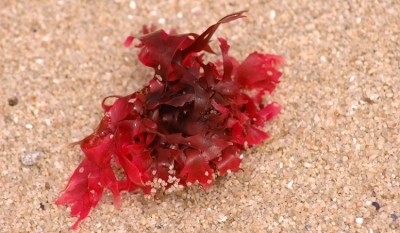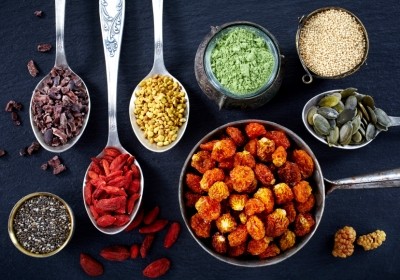Microalgae protein grown in tanks to be the next generation future of food
The United Nations predicts by 2050 there will be around 9.8bn people on Earth and feeding them will require the production of a huge amount of protein each year – 50% more than today.
Cultivated red zone
There are 14 million square kilometres of cultivated land in the world which we can use. That amounts to 1.4bn hectares and this is already fully used.
We are already in the red zone according to the planetary boundaries concept developed by Johan Rockström, professor and former executive director of the Stockholm Resilience Centre at Stockholm University and Will Steffen, executive director, the Australian National University Climate Change Institute.
There is irreversible damage in biodiversity and in the nitrogen and phosphorus cycle.
“We are facing the destruction of the planet with the way we are producing food today and one of the main challenges of the future is protein supply,” said Dr Beatrice Conde-Petit, group expert, Food Science & Technology, Bühler.
“At Bühler we are looking at how to ensure a supply of proteins in a sustainable way.
“There are different options in this approach - leveraging plant-based diets with pulses, there is an opportunity to do something with loss and waste by upcycling waste with insects for feed, new opportunities to produce protein rich food not extending arable land, for example, from single-cell organisms fermentation in a tank and microalgae."
Dry seaweed
In light of the emerging protein gap, the use of seaweed and algae as food or dietary supplement is getting increasing attention. In the Asian diet, but also on the European Atlantic coasts, algae consumption can be traced back to pre-historic times and is still present in today’s cuisine.
For example, red and brown algae are part of the daily diet in China, Korea and Japan.
Bühler Aeroglide systems are already being used to dry seaweed (semi-refined carrageenan) for several customers in South Asia.
Dried seaweed is also processed on Bühler roller mills in China. The processed products are used in the production of gelling and thickening agents with the potential to replace equivalents of animal origin, but also used as food, fertilizer and in cosmetic formulations.
Conde-Petit said many food trends are still in the developmental phase. The technologies that will come out on top will depend on what can be done efficiently and ecologically and whether they are safe. Also, consumers have to trust the products.
Beyond seaweed, opportunities are driving industrial production of microalgae, single-cell organisms including dunaliella, spirulina or chlorella.
Microalgae is microscopically small organisms that are bred in photo-bioreactors or fermenters. They contain a high proportion of proteins (depending on the species up to 70%), polyunsaturated fatty acids, beta-carotene and numerous vitamins.
Over 15 major microalgae species or groups are currently commercially used in animal and human nutrition as well as the pharmaceutical sectors. However, with over 300,000 species out of which around 30,000 are documented, the potential is far from exhausted.
Leveraging tech to increase production
“Microalgae could make a significant contribution to closing the upcoming protein gap,” said Erika Georget, project leader, Biotechnology, Bühler.
Current production mostly stems from photo-bioreactors, consisting mainly of large glass tubes or open ponds. However, large-scale biomass production has now intensified through the use of industrial scale fermenters.
One of the important process stages in extracting added-value compounds from microalgae is cell disruption.
Bühler established its Cenomic bead mill for microalgae cell disruption as part of a consortium led by the Netherlands Organization for Applied Sciences (TNO) focusing on improving the efficiency of microalgae processing.
“We have the technology and we are leveraging our academic partnerships and start-up ecosystem to move the integration of this new crop into the food chain going forward,” added Georget.
Developing food concepts
There are over 2,000 companies worldwide that are active in the production or processing of microalgae, according to the European Algae Biomass Association.
The use of fermentation is boosting biomass availability for novel applications. But key to successful market uptake of microalgae is finding ways to integrate these ingredients into attractive food products.
Bühler and Swiss start-up Alver have partnered to develop the use of microalgae as an ingredient in pasta production.
Conde-Petit revealed: “Microalgae is the next opportunity ahead... You can produce microalgae in pasta and we have worked with Swiss start-up Alver on a pilot project using microalgae as an ingredient for pasta, not yet commercially available.”
In a pilot test at the Pasta Application Centre in Uzwil, Switzerland, Bühler and Alver used golden chlorella microalgae to produce long and short pasta samples. The biomass comes as an orange powder and has a protein content of 63%.



























